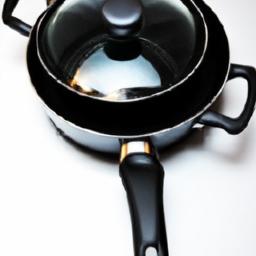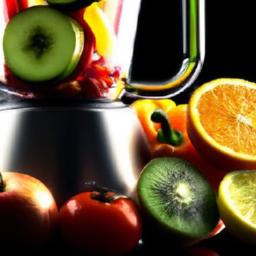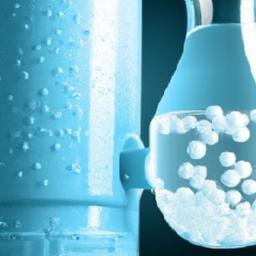Choosing Between a Saucepan and a Frying Pan: Which One Suits Your Kitchen Needs?
In any culinary space, pans play pivotal roles in preparing delicious meals. But when faced with the choice between a saucepan and a frying pan, which pan truly deserves a spot on your stovetop? While their shapes and purposes seem evident, understanding the nuanced applications of each can elevate your cooking experience tremendously.
Distinctive Features: Understanding Saucepan vs. Frying Pan
At first glance, saucepans resemble small deep pots with tall, straight sides designed to contain liquids and simmer ingredients gently. Conversely, frying pans-also known as skillets-are recognizable by their broad, flat bases and lower, flared edges that facilitate easy flipping and browning.
Imagine a saucepan as a deep reservoir, perfect for holding and simmering. The frying pan acts more like a shallow dish, ideal for fast cooking techniques that require turning or tossing.
| Characteristic | Saucepan | Frying Pan |
|---|---|---|
| Design | High, upright sides | Flat bottom with low, sloping sides |
| Primary Function | Simmering liquids, boiling, sauce preparation | Searing, frying, browning food |
| Liquid Capacity | Can hold substantial volumes | Limited liquid retention |
| Handle Features | Usually a single long handle | Long handle, often with an auxiliary helper handle |
When deciding which pan suits your dinner plan, consider whether you need to keep ingredients submerged or expose them to direct heat for a crisp finish. Saucepans maintain moisture, while frying pans encourage evaporation and caramelization.
Modern frying pans commonly include non-stick coatings to simplify flipping and cleaning, whereas saucepans emphasize durability and even heat for extended cooking times.
Heat Dynamics: Which Pan Manages Temperature Better?
The way each pan handles heat dramatically affects your cooking results. Frying pans rapidly reach higher temperatures, ideal for quick searing or stir-frying. In contrast, saucepans excel by warming evenly and maintaining gentle heat for lengthy simmering tasks.
| Heat Characteristic | Frying Pan | Saucepan |
|---|---|---|
| Heat-up Speed | Fast, suited for high-heat cooking | Slower, perfect for controlled simmering |
| Heat Distribution | May develop hot spots; requires attention | Even and consistent heat distribution |
| Optimal Temperature Range | Medium to very high heat | Low to medium heat for gentle cooking |
| Temperature Adjustment | Must be monitored closely for quick changes | Allows gradual temperature modifications |
If you’re looking to achieve a beautiful sear on steak or a fast stir-fry of vegetables, the frying pan is your best ally. For delicate sauces or hearty soups requiring longer cook times, the saucepan offers mastery in controlled temperature management.
Matching Pans to Culinary Tasks
Effectively selecting the right pan often comes down to the cooking method and desired outcome. Saucepans are indispensable for recipes involving liquids-boiling pasta, crafting sauces, or simmering soups. Their tall sides prevent spills and encourage even cooking.
Frying pans, with their expansive flat surfaces and low sides, facilitate easy maneuvering of ingredients for sautéing, frying eggs, or achieving a golden crust on proteins.
| Cooking Task | Recommended Pan | Reasoning |
|---|---|---|
| Boiling pasta | Saucepan | Ample liquid capacity and splash protection |
| Preparing gravy | Saucepan | Ensures gentle heat and space for stirring |
| Frying eggs | Frying pan | Wide surface for even cooking and easy flipping |
| Searing chicken breasts | Frying pan | Allows high heat and direct contact for browning |
Attempting to make sauces in a frying pan or frying in a saucepan often leads to frustrating results. Picking the correct vessel for the culinary task streamlines your cooking and enhances flavor and texture.
Materials Matter: Impact of Pan Composition on Cooking
The material a pan is constructed from significantly influences its heat conduction, durability, and maintenance requirements. Here’s a snapshot of common materials used for both saucepans and frying pans:
- Stainless Steel: Durable and resistant to corrosion, provides moderate heat conduction; often favored for its even cooking and ease of cleaning.
- Cast Iron: Heavyweight champion of heat retention and even ferocious searing, requires seasoning and careful upkeep.
- Non-Stick Coating: Ideal for delicate foods like eggs or pancakes; requires gentle cleaning to maintain surface integrity.
- Aluminum: Lightweight and excellent heat conductor but can warp under extreme temperature shifts.
| Material | Heat Conductivity | Optimal Uses | Maintenance |
|---|---|---|---|
| Stainless Steel | Moderate | Boiling, searing | Easy to maintain |
| Cast Iron | High | Frying, slow cooking | Requires seasoning |
| Nonstick | Low to moderate | Fragile foods, easy cleanup | Gentle washing |
| Aluminum | High | Quick heating tasks | Moderate care |
Considering your cooking style alongside pan material ensures you invest in cookware that resonates with your culinary preferences and maintenance commitments.
How Size and Form Influence Cooking Results
Choosing the correct size and shape can dramatically affect cooking outcomes. For liquid-heavy preparations, a deep saucepan with high walls minimizes splatter and heat loss. For recipes like bacon, stir-fries, or searing, a frying pan’s broad, shallow surface allows ingredients to brown evenly and turn effortlessly.
- Saucepans: Feature deep, narrow designs ideal for liquids, stews, and small batches of grains.
- Frying pans: Shallow and wide, perfect for frying, browning, and tossing.
| Pan Type | Typical Shape | Best Culinary Use | Functionality Explanation |
|---|---|---|---|
| Saucepan | Tall with high sides | Simmering, boiling liquids | Prevents splatter and retains heat efficiently |
| Frying Pan | Wide, flat base | Searing, pan-frying | Provides even heat and space for turning food |
Also remember, overcrowding pans can steam foods rather than brown them, while too large pans might dry out ingredients. Selecting the right size ensures optimal cooking texture and flavor development.
Maintaining Your Cookware: Care Tips for Longevity
Proper cleaning and maintenance are essential to prolong the life and performance of your pans. Avoid abrasive scrubbing on non-stick surfaces; instead, soak with warm soapy water. For cast iron, seasoning keeps the surface naturally non-stick and protects against rust.
- Saucepans: Soak to loosen stuck-on food; avoid harsh scrubbing.
- Frying pans: Use wooden or silicone utensils to prevent scratches.
- General care: Always dry immediately after washing to prevent rust and spots.
| Care Practice | Why It’s Important | Pro Tip |
|---|---|---|
| Hand Wash Only | Preserves coatings and finish | Use mild detergent and soft cloth |
| Avoid Sudden Temperature Changes | Prevents warping and damage | Let pans cool before rinsing |
| Use Soft Tools | Prevents scratching surfaces | Employ wooden or silicone spatulas |
Following these guidelines will keep your pans looking great and performing flawlessly, reducing the need for frequent replacement and enhancing your overall cooking experience.
Recommended Recipes: Best Dishes for Each Pan Type
Both saucepans and frying pans excel at different culinary creations, leveraging their designs and heat capabilities.
- Saucepan favorites: Tomato-based sauces gently simmered for rich flavor, fluffy rice cooked evenly without scorching, and creamy oatmeal breakfasts.
- Frying pan standouts: Quick vegetable stir-fries infused with crisp texture, perfectly cooked eggs whether fried or scrambled, and golden, airy pancakes.
| Pan Type | Dish | Reason for Suitability |
|---|---|---|
| Saucepan | Marinara Sauce | High sides prevent splatter and enable slow cooking |
| Saucepan | Steamed Vegetables | Retains steam with lid for even cooking |
| Frying Pan | Seared Steak | Flat surface promotes even browning and crust formation |
| Frying Pan | Omelets | Low sides and non-stick surfaces allow easy flipping |
Frequently Asked Questions About Saucepan vs. Frying Pan
- What fundamentally distinguishes a saucepan from a frying pan?
- The saucepan boasts tall, straight sides ideal for liquid-based tasks, whereas the frying pan features lower, sloped sides to facilitate turning and frying ingredients.
- Is it appropriate to cook eggs in a saucepan?
- While possible, it is cumbersome due to high sides restricting spatula movement. Frying pans offer a much better experience for eggs.
- Which is more suitable for sauces?
- Saucepans take the lead since their high sides hold liquids and minimize splattering, critical for smooth sauce preparation.
- Can frying pans be used for sautéing vegetables?
- Absolutely. Their wide surface and quick heating make them ideal for sautéing and stir-frying veggies efficiently.
- How do pan size and shape influence cooking?
- Shape determines the cooking technique and food quantity suitability, with saucers excelling in liquid containment, and frying pans providing surface area for browning and flipping.
- Do I need both a saucepan and frying pan?
- While some attempt to make do with one, having both offers versatility akin to using the correct tool for specific kitchen tasks.
- What materials are recommended for these pans?
- Stainless steel, non-stick, and cast iron are popular choices, each with distinct advantages in heat conduction, maintenance, and cooking style compatibility.
- How should I clean my pans to maintain their quality?
- Allow pans to cool before washing; avoid abrasive cleaners on delicate surfaces; soak stubborn residue and always dry thoroughly to prevent damage.
Summary Comparison Table: Saucepan vs. Frying Pan
| Attribute | Saucepan | Frying Pan |
|---|---|---|
| Shape | Tall, straight sides | Wide, sloping sides |
| Main Uses | Boiling, simmering liquids | Frying, sautéing |
| Capacity | Large liquid volume | Smaller liquid volume |
| Cooking Surface | Narrow base | Wide base |
| Ease of Flipping | Limited | Excellent |
| Typical Foods | Soups, sauces, pasta | Eggs, vegetables, meats |
Concluding Thoughts
Both saucepans and frying pans serve indispensable roles in the kitchen, complementing each other’s culinary strengths. The saucepan’s deep sides and capacity to handle liquids make it perfect for soups, stocks, and sauces. Meanwhile, the frying pan’s broad, shallow design is tailored for searing, frying, and sautéing.
Choosing the correct pan based on your cooking goals can transform meal prep from a challenge into an enjoyable craft. Whether you’re whipping up a velvety sauce or searing a juicy piece of meat, having the right pan elevates your results and enjoyment in the kitchen.
So, which will be your go-to pan? Start with one that aligns with the recipes you cook most often, then gradually build a versatile collection. Happy cooking!




